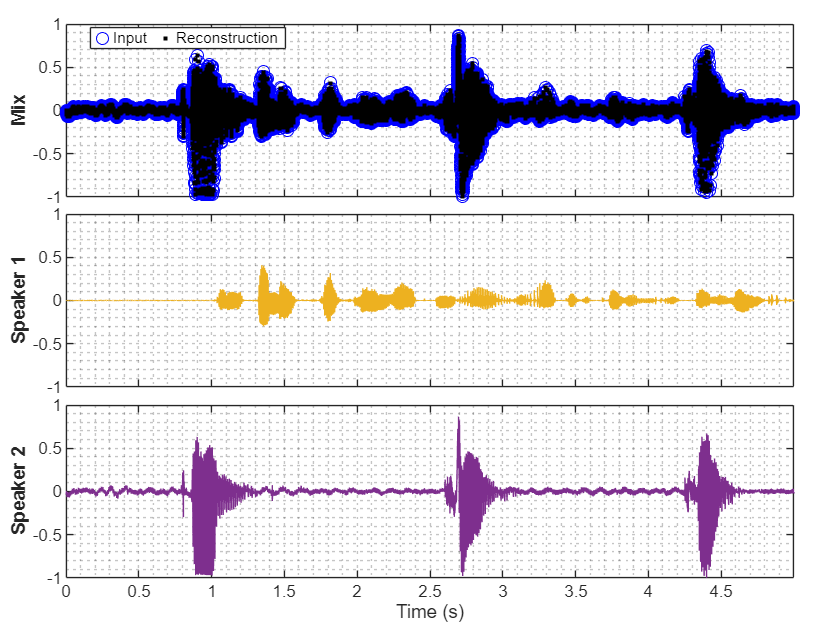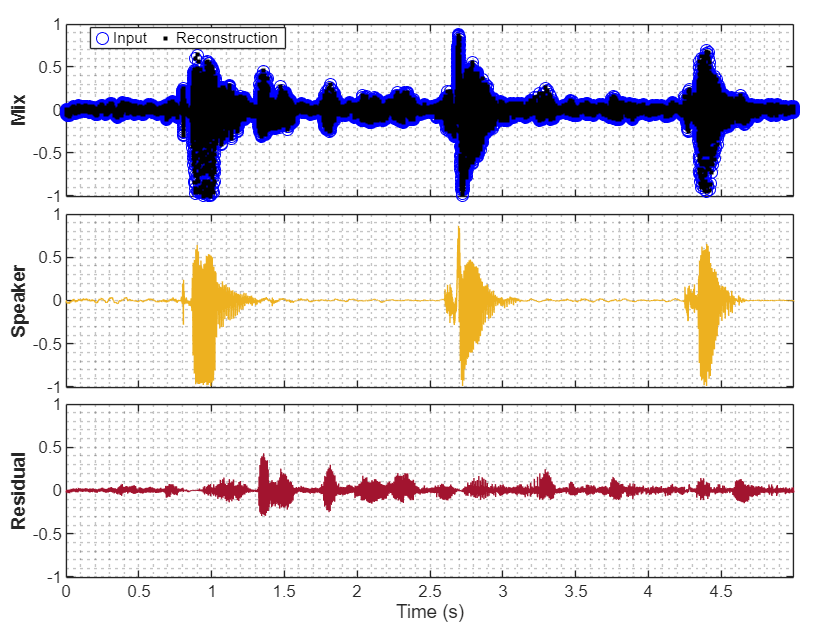permutationInvariantSISNR
Syntax
Description
metric = permutationInvariantSISNR(proc,ref)
metric = permutationInvariantSISNR(proc,ref,Name=Value)permutationInvariantSISNR(proc,ref,SubtractMean=false) does not
subtract the means from individual signals before computing the permutation invariant
SI-SNR.
Examples
Input Arguments
Name-Value Arguments
Output Arguments
Algorithms
References
[1] Kolbaek, Morten, Dong Yu, Zheng-Hua Tan, and Jesper Jensen. “Multitalker Speech Separation With Utterance-Level Permutation Invariant Training of Deep Recurrent Neural Networks.” IEEE/ACM Transactions on Audio, Speech, and Language Processing 25, no. 10 (October 2017): 1901–13. https://doi.org/10.1109/TASLP.2017.2726762.
[2] Takahashi, Naoya, Sudarsanam Parthasaarathy, Nabarun Goswami, and Yuki Mitsufuji. “Recursive Speech Separation for Unknown Number of Speakers.” In Interspeech 2019, 1348–52. ISCA, 2019. https://doi.org/10.21437/Interspeech.2019-1550.
[3] Yu, Dong, Morten Kolbaek, Zheng-Hua Tan, and Jesper Jensen. “Permutation Invariant Training of Deep Models for Speaker-Independent Multi-Talker Speech Separation.” In 2017 IEEE International Conference on Acoustics, Speech and Signal Processing (ICASSP), 241–45. New Orleans, LA: IEEE, 2017. https://doi.org/10.1109/ICASSP.2017.7952154.
Extended Capabilities
Version History
Introduced in R2024b

